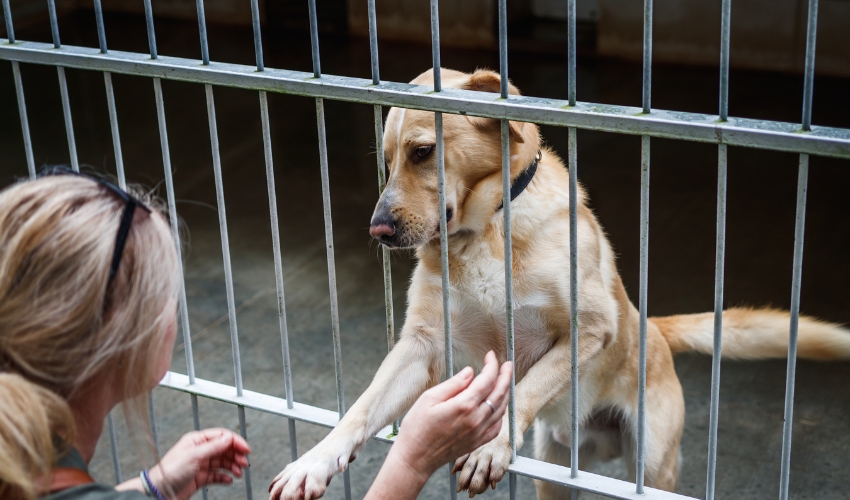Dogs can also be affected with diabetes like humans. It’s a serious dog condition that is becoming common nowadays. As fur parents, we want our babies to be healthy and get treated accordingly. If you’ve ever wondered, “what are the 2 types of diabetes in dogs” we’re here to explain it!
According to David Bruyette in the Merck Veterinary Manual, sugar diabetes or diabetes mellitus is a common metabolism disorder in dogs that affects about 1 of every 300 patients. Most cases of diabetes occur in middle-aged dogs, and female dogs are affected twice as male dogs. It can affect any breed, but diabetes seems to increase in dog breeds such as Cairn Terriers, Beagles, and Miniature Poodles.
Dogs can develop diabetes at an early age, especially if their parents have the same disease. In normal circumstances, dogs may have diabetes between the ages 7 to 9.
2 Types Of Diabetes In Dogs
Every cell in an individual’s body uses glucose as its primary energy source. However, this can only happen through the help of insulin. When glucose and insulin can’t work together correctly, your dog can become diabetic.
To answer the question, “what are the 2 types of diabetes in dogs,” keep on reading!
Type 1 Diabetes: Insulin-Deficiency Diabetes
Type 1 diabetes or insulin-deficiency diabetes is the most common type of diabetes in dogs. It is dangerous and can be very difficult to spot. This type happens when your dog’s pancreas is damaged or not functioning well.
These dogs will have to rely on insulin shot dog diabetes treatments for the rest of their lives to replace the missing insulin in their system.
Type 2 Diabetes: Insulin-Resistance Diabetes
Type 2 diabetes or insulin-resistance diabetes happens when a dog’s pancreas produces insulin but their bodies aren’t utilizing them as it should. It typically occurs in older obese dogs; female dogs can also develop this type while pregnant.
According to a study by David Bruyette, the most common causes of Type 2 diabetes include obesity, chronic pancreatitis, urinary tract infections, liver insufficiency, and diabetogenic drugs. That’s why veterinarians must have thorough examinations of dogs for proper treatments.
4 Symptoms Of Diabetes In Dogs

Dogs are known to be very playful and social animals — they tend to be clingy with their fur parents. When these pups become a little sluggish, they are either sad or experiencing diabetes symptoms.
After knowing the answer to “what are the 2 types of diabetes in dogs,” you should know how to assess the symptoms first. Below are a few noticeable signs you should look out for:
1. Lack Of Energy
As mentioned earlier, dogs are very playful creatures. If they suddenly become less energetic, a trip to the vet should be in order. This symptom is not only found in a dog with diabetes, but also in canine distemper.
2. Sudden Weight Loss
You should check if your dog eats a lot or not. If their eating behavior doesn’t reflect their weight, something is wrong with them. They are probably having a hard time converting food nutrients efficiently.
3. Increased Urination Habit
When a dog’s pancreas produces excessive sugar, frequent urination happens as they try to get them out of their system. You can train your dogs to urinate outside, but if their bladders have problems, they might urinate whenever and wherever.
4. Excessive Drinking
Even though water is good for our health, too much of it isn’t good. If your dog drinks more frequently and often leaves their water bowls empty, they might have diabetes.
Conclusion
Now that we have the answer to “what are the 2 types of diabetes in dogs” and their symptoms, we can see that diabetes is a life-threatening condition for dogs. If your dog exhibits symptoms, you shouldn’t ignore them; take your baby to the vet immediately!
In addition to frequent vet visits, pet care must start at home. Simple home care check-ups such as regularly monitoring your dog’s behavior and diet are something you can perform as an owner.
If you want to be confident about your dog’s health, you can visit Doobert and learn more about these diseases. They provide articles that could help you understand your pets’ behaviors and mannerisms. You can also be a part of their growing community by registering to adopt and be one of their volunteers!











